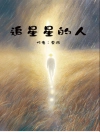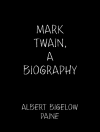The Monster is an 1898 novella by American author Stephen Crane (1871–1900). The story takes place in the small, fictional town of Whilomville, New York. An American-African coachman
named Henry Johnson, who is employed by the town’s physician, Dr.
Trescott, becomes horribly disfigured after he saves Trescott’s son from
a fire. When Henry is branded a ‘monster’ by the town’s residents,
Trescott vows to shelter and care for him, resulting in his family’s
exclusion from the community. The novella reflects upon the 19th-century
social divide and ethnic tensions in America.
The fictional town of Whilomville, which is used in 14 other Crane stories, was based on Port Jervis, New York,
where Crane lived with his family for a few years during his youth. It
is thought that he took inspiration from several local men who were
similarly disfigured, although modern critics have made numerous
connections between the story and the 1892 lynching
in Port Jervis of an African-American man named Robert Lewis. A study
of prejudice, fear, and isolation in a rather small town, the novella
was first published in Harper’s Magazine in August 1898. A year later, it was included in The Monster and Other Stories—the last collection of Crane’s work to be published during his lifetime.
Written in a more exact and less dramatic style than two of his previous major works (Maggie: A Girl of the Streets and The Red Badge of Courage), The Monster
differs from the other Whilomville stories in its scope and length. Its
themes include the paradoxical study of monstrosity and deformity, as
well as race and tolerance. While the novella and collection received
mixed reviews from contemporary critics, The Monster is now considered one of Crane’s best works.
The Monster (excerpt)
Little Jim was, for the time, engine Number 36,
and he was making the run between Syracuse and Rochester. He was
fourteen minutes behind time, and the throttle was wide open. In
consequence, when he swung around the curve at the flower-bed, a
wheel of his cart destroyed a peony. Number 36 slowed down at once
and looked guiltily at his father, who was mowing the lawn. The
doctor had his back to this accident, and he continued to pace slowly
to and fro, pushing the mower.
Jim dropped the tongue of the cart. He looked at
his father and at the broken flower. Finally he went to the peony and
tried to stand it on its pins, resuscitated, but the spine of it was
hurt, and it would only hang limply from his hand. Jim could do no
reparation. He looked again towards his father.
He went on to the lawn, very slowly, and kicking
wretchedly at the turf. Presently his father came along with the
whirring machine, while the sweet, new grass blades spun from the
knives. In a low voice, Jim said, ‘Pa!’
The doctor was shaving this lawn as if it were a
priest’s chin. All during the season he had worked at it in the
coolness and peace of the evenings after supper. Even in the shadow
of the cherry-trees the grass was strong and healthy. Jim raised his
voice a trifle. ‘Pa!’
The doctor paused, and with the howl of the
machine no longer occupying the sense, one could hear the robins in
the cherry-trees arranging their affairs. Jim’s hands were behind his
back, and sometimes his fingers clasped and unclasped. Again he said,
‘Pa!’ The child’s fresh and rosy lip was lowered…
Stephen Crane (November 1, 1871 – June 5, 1900) was an
American poet, novelist, and short story writer. Prolific throughout his
short life, he wrote notable works in the Realist tradition as well as early examples of American Naturalism and Impressionism. He is recognized by modern critics as one of the most innovative writers of his generation.
The ninth surviving child of Protestant Methodist parents, Crane
began writing at the age of four and had published several articles by
the age of 16. Having little interest in university studies, he left
college in 1891 to work as a reporter and writer. Crane’s first novel was the 1893 Bowery tale Maggie: A Girl of the Streets,
generally considered by critics to be the first work of American
literary Naturalism. He won international acclaim in 1895 for his Civil War novel The Red Badge of Courage, which he wrote without having any battle experience.












